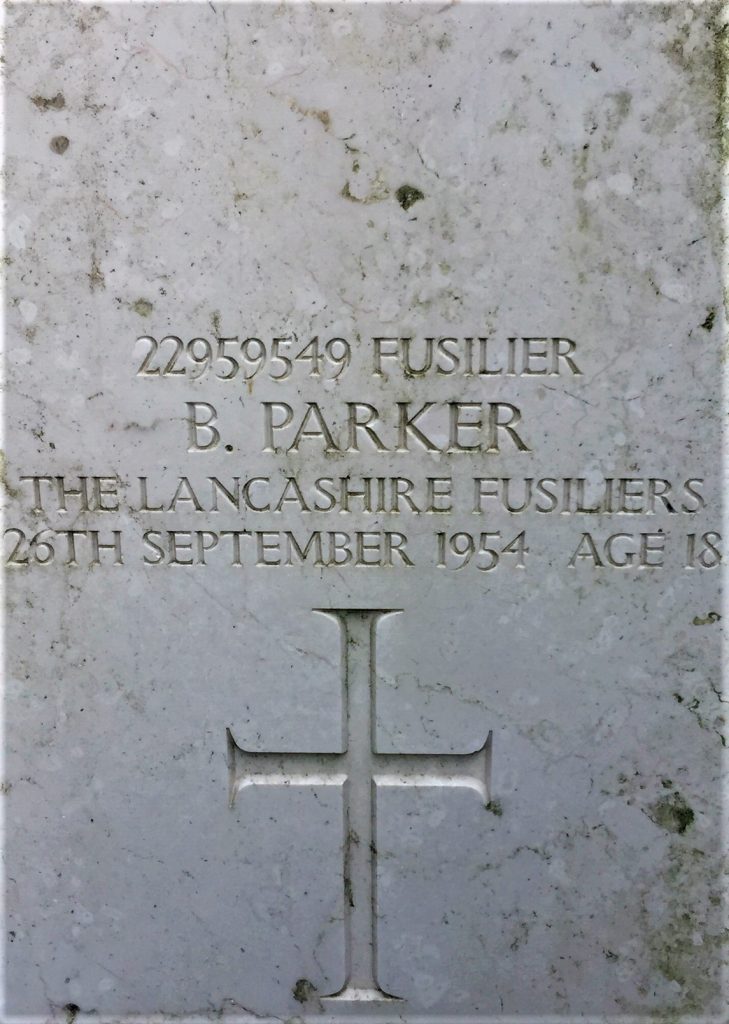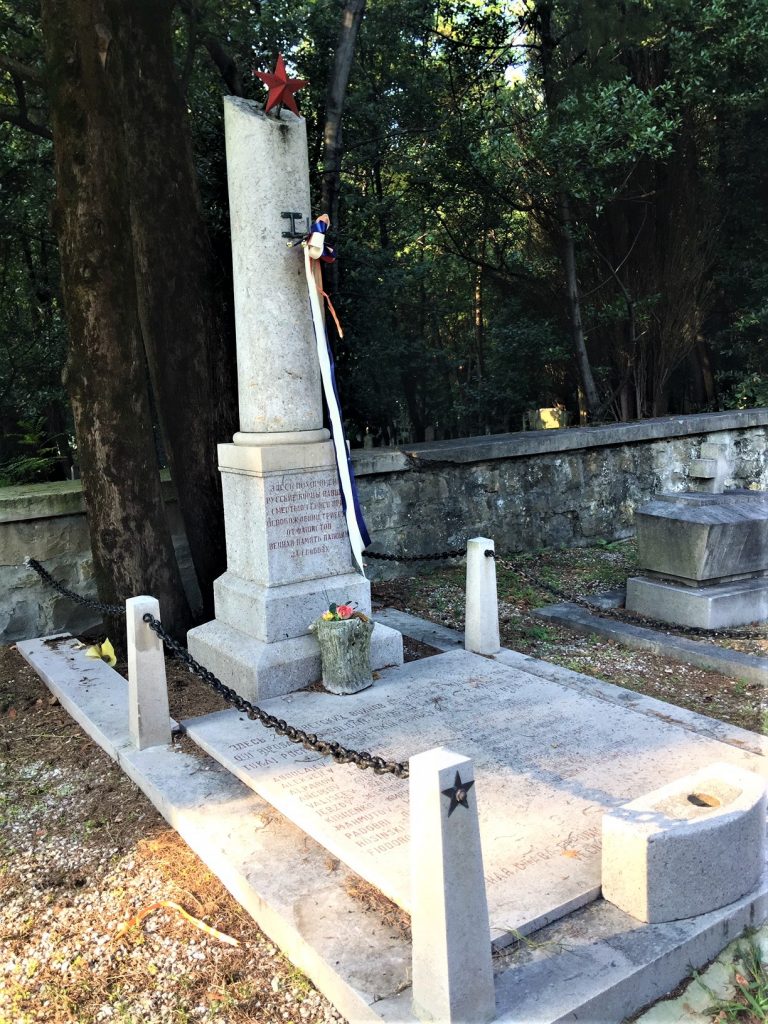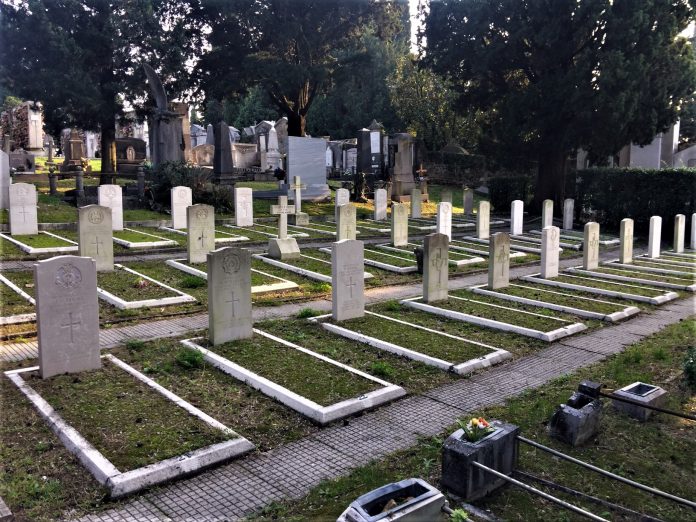words and photography: Alessandra Ressa
As a traveler, I find that the best hidden secrets are often to be found in cemeteries, and no city other than Trieste holds this to be true. Its international past, culture, troubled history and controversial celebrities are all to be found in the graves that cover the hills of Sant’Anna, where for almost two centuries folks of different ethnic groups, religions, nationalities and political stand have been resting side by side in eternal peace. Here, in the quiet setting of the former military cemetery, lay the mortal remains of 33 British soldiers who died in Trieste following the end of World War II, between 1946 and 1954.

These young Brits lost their lives while serving with the Allied forces immediately after the end of the conflict, in the attempt to maintain stability in this troubled land. In the years between 1945 and 1954 Trieste had in fact become a hotspot for international powers. The city, which had become the Free Territory of Trieste, was fiercely contended between the Western world and Tito’s Yugoslavia. The Anglo-American occupation force spent 9 years trying to negotiate a compromise, which was eventually reached in 1954. Trieste was to remain Italian, while all the Italian territories in the Balkan peninsula were handed to Yugoslavia.

The tombstones are strikingly white and well tended. Fortunately, the British military corner of the Sant’Anna cemetery has not suffered the neglect other graves sadly display. The British soldiers all belonged to different regiments (several were the members of the Lancashire Regiment) and to the military police. Apart from their cruel destiny, they also had young age in common.

We don’t precisely know in what circumstances these soldiers died in Trieste. We can only assume, from the newspaper reports of the time, that they perished during the frequent clashes with Triestini, who saw in the Anglo-American occupation forces the new foreign enemy. We learn that a few were fatally injured in car accidents. Today, although Trieste’s British military cemetery seems largely forgotten, the epitaph on one of the tumbstones hopes for remembrance, “there’s a place in our hearts called memory lane”.

But the unexpected finds in the former military cemetery are not over, because standing next to the British soldiers is an unusual monument, a stone obelisk with a red star in remembrance of the 104 Russian soldiers who died during the fight for the liberation of Trieste against the nazi occupation. Of those, 36 were Kazakhs. Further away, another impressive funerary monument is dedicated to the fallen of the Yugoslav liberation army and to all the partisans who joined the fight against nazi Germany in Trieste. A little behind this monument, another red star on a tumbstone stands alone to recall the extreme sacrifice of another 29 Russian soldiers who died in Trieste on may 2nd, 1945.































Hi Alessandra, I have enjoyed reading your articles on your website!
My name is Mick Thornton, living in Aberdeen Scotland. My wife and I just returned from two days in Trieste which we enjoyed very much. My Dad was in the British Military Police in Trieste in 1952, and I was hoping to find out some informationabout where the army offices and living barracks were located etc, but unfortunately I had very little success in finding anything there. I was fascinated finding out the BETFOR story and the partition of Trieste and Istria, which i had not heard about before.
He has passed away now but he left me some old photos that I was trying to locate, and I was wondering if you could help identify any of them please?
Hi Mick
Like you my dad was in the british military police in Trieste in 1940’s ..I have old photos of my dad in Trieste but I can’t find any of the barracks etc we have come over for a few days to Trieste seeing if we can find out anything ..we been told the archive offices are now closed ..I now waiting from British WW2 army records for my dad to be sent to me …this could take 6 -12 months due to the back log
Hi Sue, thanks for your text, I wasn’t sure if anyone read these posts as I never got a reply form the author of the article, Alessandra. The Italian & Trieste authorities seem to have whitewashed WW2 history from their memory. I spoke to the Tour st Office in Trieste who informed me that there was nothing in their museum on the history of the end of WW2.
It’s a shame as I could see photos of some buidings from my Dad’s photos of 1952 an wanted to retrace the steps, but couldn’t find help to identiy the buildings there.
Ona positive note, I was able to get my Dad’s National Service Records under a “Freedom of Information” request, these came fairly quickly, via gov.uk,
APC-Sp-ADPMRApplications-Army (MULTIUSER)
These is a fabulous book to read, that i discovered after returning from Trieste –
Flashpoint Trieste
by Christian Jennings
Regular price£3.50 (used) from World of Books
https://www.worldofbooks.com/en-gb/products/flashpoint-trieste-book-christian-jennings-9781472821706
Please feel free to contact me via my email if I can be of any help.
Cheers, Mick
mick.thornton@hotmail.com
I was born in triests in the British military hospital in 1948 and my sister also in 1952. Are there any other trieste babies still alive? I would love to meet one.